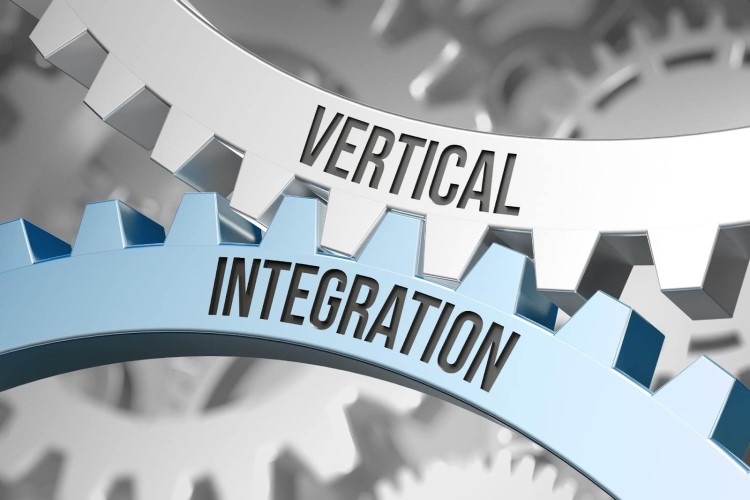
Introduction to Vertical Integration
Vertical Integration is a business strategy in which a company expands its control over multiple stages of its production or supply chain. This can include owning or managing its suppliers, distributors, or retail outlets, giving the company greater authority over the entire process, from raw materials to final sales. By integrating different stages of production, businesses can streamline operations, reduce costs, and maintain tighter control over quality and timelines.
The importance of Vertical Integration lies in its ability to enhance operational efficiency. When a company controls more stages of its supply chain, it can eliminate intermediaries and reduce reliance on external suppliers. This allows for greater flexibility, as companies can adjust production schedules or inventory management to better respond to market demand. In addition, controlling the supply chain helps reduce disruptions, leading to more consistent production and improved product quality.
Furthermore, Vertical Integration can provide a competitive advantage by allowing companies to reduce costs and maintain higher profit margins. By cutting out middlemen and reducing markups from third-party suppliers or distributors, businesses can lower production costs and increase their market share. Overall, Vertical Integration is a powerful strategy for companies looking to gain more control over their supply chains and enhance long-term operational efficiency.
Types of Vertical Integration: Forward and Backward
There are two main types of Vertical Integration: forward integration and backward integration. Both approaches involve gaining control over different parts of the supply chain but in opposite directions. Forward integration occurs when a company moves further down the supply chain by acquiring control over distribution or retail operations. This strategy allows businesses to sell directly to consumers, eliminating the need for third-party distributors or retailers. By doing so, companies can capture a larger share of the profits and gain more control over customer relationships and pricing strategies.
On the other hand, backward integration involves a company taking control of its suppliers or raw materials. In this scenario, the company moves upstream in the supply chain to ensure a reliable source of essential inputs. By owning or controlling suppliers, businesses can reduce their dependency on external providers, secure supply, and potentially lower production costs. Backward integration is particularly useful in industries where supply chain disruptions can severely impact production schedules or quality.
While both types of Vertical Integration offer benefits, they serve different strategic purposes. Forward integration focuses on controlling the final stages of the supply chain, enhancing customer relationships, and increasing revenue. Backward integration, meanwhile, emphasizes control over production inputs, ensuring stability and reducing costs. Together, these approaches provide businesses with the flexibility to enhance their competitive position and gain more control over their supply chain operations.
Benefits of Vertical Integration
Vertical Integration offers several significant benefits for businesses, particularly in terms of cost reduction, improved control over production, and enhanced market position. One of the key advantages is cost reduction, as companies that own multiple stages of their supply chain can eliminate the need for intermediaries. By controlling more of the process, businesses reduce markups from third-party suppliers or distributors, which can lower overall production costs and improve profit margins.
Another major benefit of Vertical Integration is better control over production quality and timelines. When a company manages its own suppliers or distribution channels, it gains greater oversight and can ensure that materials and products meet quality standards. This level of control also helps businesses avoid delays or supply chain disruptions. It allows for more efficient production and a faster time to market. Additionally, having this oversight can lead to innovation and process improvements, further enhancing operational efficiency.
Lastly, Vertical Integration strengthens a company’s market position by creating barriers to entry for competitors. When a business controls crucial aspects of the supply chain, it can secure exclusive access to resources or distribution channels. This competitive advantage not only helps in reducing costs but also allows businesses to respond more effectively to market changes. Ultimately, Vertical Integration provides companies with the tools to achieve long-term stability and profitability by streamlining operations and gaining control over their supply chains.
Challenges and Risks
While Vertical Integration offers numerous benefits, it also presents several challenges and risks that businesses must consider. One of the most significant drawbacks is the high upfront cost. Acquiring control over additional parts of the supply chain, whether through purchasing suppliers or building distribution networks, requires substantial investment. These initial expenses can strain a company’s finances. This is especially the case for smaller businesses that may not have the resources to sustain such large capital expenditures.
Another challenge associated with Vertical Integration is reduced flexibility. By integrating vertically, a company becomes more reliant on its own internal processes. This can limit its ability to quickly adapt to changes in the market. For example, if a business controls its own supply chain, it may find it difficult to pivot to alternative suppliers in response to sudden market shifts or changing consumer demands. This rigidity can place businesses at a disadvantage in industries where innovation and rapid response are critical.
Additionally, Vertical Integration increases management complexity. Controlling multiple stages of the supply chain requires additional oversight and expertise, which can complicate day-to-day operations. Managing a broader range of activities can stretch a company’s leadership and resources thin. This can lead to inefficiencies or operational challenges. As companies expand their scope, they must carefully assess whether they have the management capabilities to handle the increased complexity that comes with Vertical Integration. Despite its advantages, these challenges highlight the need for a strategic and well-resourced approach to vertical expansion.
Examples of Successful Vertical Integration
Vertical Integration has been successfully implemented by several prominent companies. It has helped them achieve greater control over their supply chains and boost profitability. One well-known example is Apple, which has strategically used Vertical Integration to control both hardware and software production. By manufacturing its own components and developing its own software, Apple ensures seamless integration across its products. This approach has allowed Apple to reduce reliance on third-party suppliers and create a more cohesive customer experience. This contributes to its position as a leader in the tech industry.
Another strong example of Vertical Integration is Tesla. Tesla controls multiple stages of its supply chain, from battery production to vehicle manufacturing and even its distribution through company-owned stores. This level of control allows Tesla to innovate more rapidly and reduce production costs. By bypassing traditional dealerships and selling directly to consumers, Tesla not only increases its profit margins but also maintains a more personalized customer relationship. This integration strategy has played a key role in Tesla’s rapid growth and success in the electric vehicle market.
Amazon is another company that has benefited from Vertical Integration. By building its own distribution network, Amazon has gained greater control over shipping times, delivery efficiency, and customer service. With initiatives such as Amazon Prime and its logistics infrastructure, Amazon can deliver products faster than competitors and lower its shipping costs. This vertical control over both the supply chain and distribution has made Amazon a dominant force in e-commerce. This has set new industry standards for speed and convenience. These examples highlight how Vertical Integration can provide companies with a competitive edge by enhancing control and operational efficiency across multiple areas of their business.
Conclusion
In conclusion, Vertical Integration offers businesses significant advantages by providing greater control over supply chains, reducing costs, and enhancing operational efficiency. Companies that implement vertical integration can streamline their production processes and strengthen their market position by reducing reliance on third parties. However, businesses must also be aware of the challenges, such as high upfront costs and increased management complexity. When executed strategically, Vertical Integration can lead to long-term success, as seen in the examples of Apple, Tesla, and Amazon. Ultimately, it remains a powerful tool for companies looking to gain a competitive edge in their industries.


